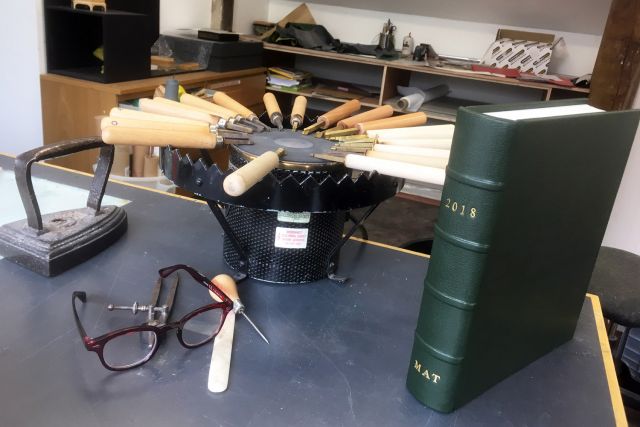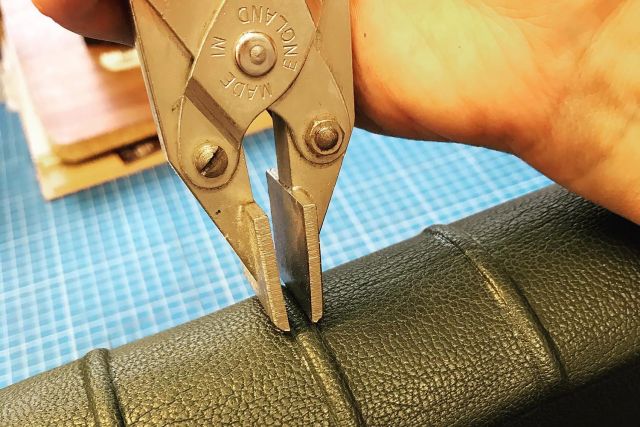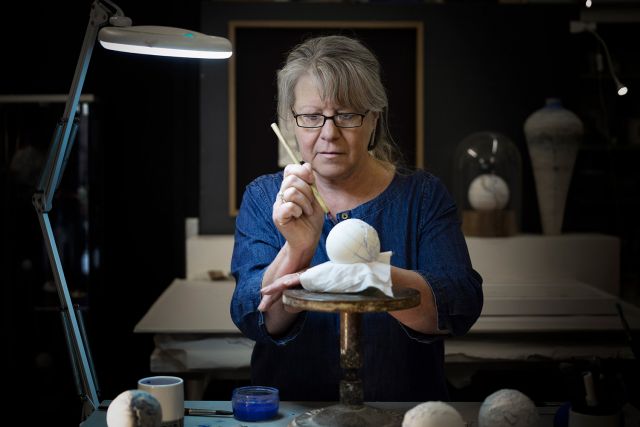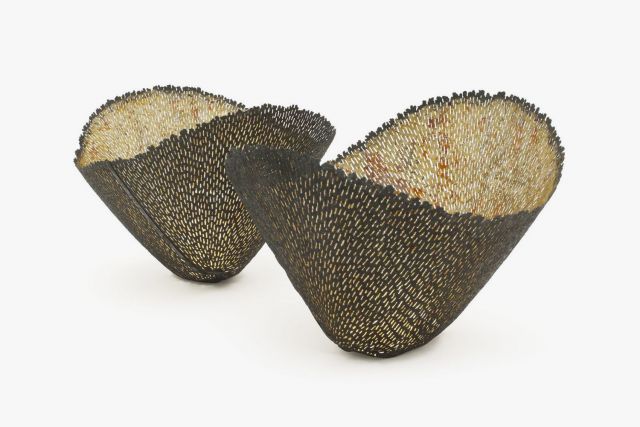This black calfskin binding shows a part of Saturn made out of bronze and red-gold pigment, with white gold, holographic tooling rings encircling the planet. Kate Holland drew inspiration from Clarke's book itself, which is about a spaceship travelling to Saturn carrying Dr Bowman and the artificially intelligent computer HAL9000. The opening chapter is translated into binary code and printed on black Bible paper. This beautiful piece is part of The British Library collection.
Length 20 cm
Width 2.5 cm
Height 13 cm
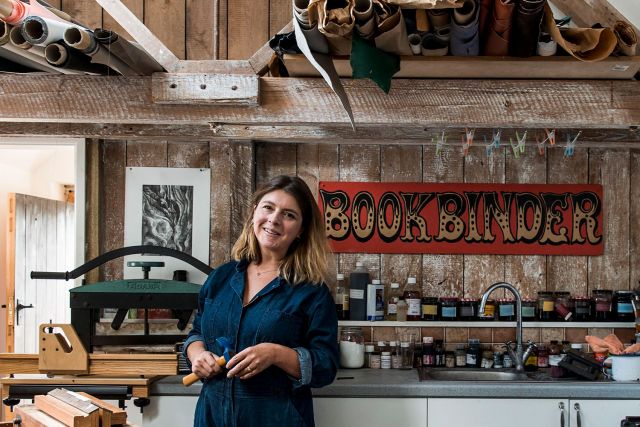
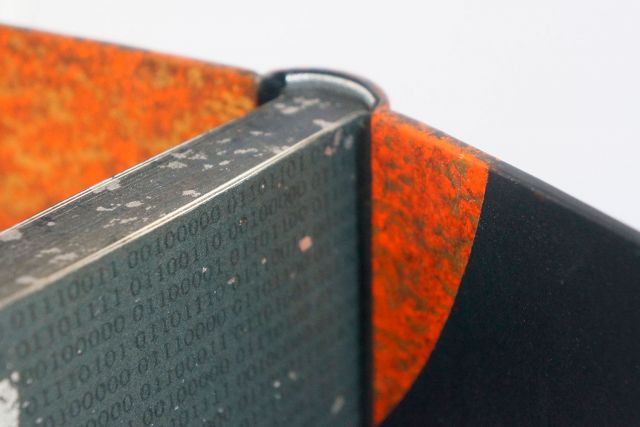
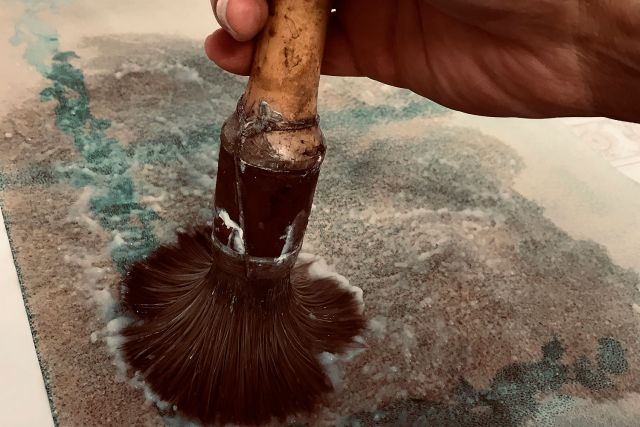
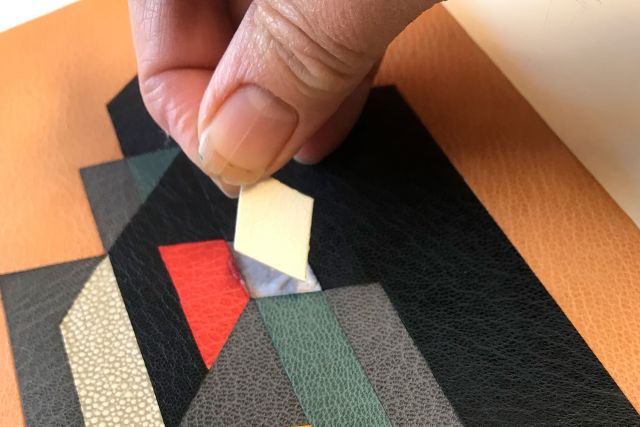

Kate Holland
- Bookbinder
- Warminster, United Kingdom
- Master Artisan
By appointment only
+44 07960754826
The art of bookbinding
- • Kate specialises in artistic binding
- • Her most used tool is a humble bone folder
- • Bookbinding is the perfect marriage of form and function
Kate Holland discovered bookbinding when she worked for the London antiquarian bookshop Robert Frew Ltd after struggling to start a career as a contemporary Chinese art dealer. While taking a weekly morning class in order to be able to help repair and refurbish the books in the shop, Kate became hooked and enrolled for a part-time Higher National Diploma. After graduating and winning the Kate Thomson prize for best student, she opened her current workshop in 2007 in a refurbished cowshed near Frome, a historic town of binders and home to the first colour printers in the UK, Butler and Tanner. “Bookbinding covers a huge array of disciplines from restoration to conservation, book arts to artist books,” she says. Her specialisation has led her to bind several of the shortlisted Booker Prize titles.
Read the full interviewWorks
Photo: © Kate Holland

Photo: © Kate Holland
This Kate Holland binding is made out of grey dyed calfskin with neon orange leather sunken onlays and gold tooling. The endpapers show an altered close-up image of the red-hot poker plant, with neon highlights. It is a rebinding of a first edition of Huxley’s seminal account of taking the psychoactive drug mescalin, where he recounts his impressions of a red-hot poker plant in his garden while under the influence in a monochrome post-war world.
Length 19.5 cm
Width 2.2 cm
Height 13.5 cm

Photo: © Kate Holland
This printed alum tawd calfskin binding shows an open window with several red-hot poker plants in front of it. Added to this background are circles of sunken onlay spots in neon orange leather and 23k gold tooling. It is a rebinding of a first edition of Huxley’s seminal account of taking the psychoactive drug mescalin, where he recounts his impressions of a red-hot poker plant in his garden while under the influence.
Length 19.5 cm
Width 2.2 cm
Height 13.5 cm

Photo: © Kate Holland
In a nod to Art Nouveau, this cover depicts glossy peacock feathers on black goatskin. Japanese paper inlays with yellow gold and aluminium highlights, gold tooled dots, doublures in distressed aluminium with yellow gold highlights, and silver leather endbands give the book a luxurious finish. This binding is part of the collection of furniture designer John Makepeace.
Length 19.3 cm
Width 3.1 cm
Height 14.1 cm

Photo: © Kate Holland
This binding is in pierced dark green goatskin, with 23k red gold borders, green goatskin doublures with terracotta goatskin onlays, gold tooling, terracotta goatskin joints, dendritic printed paste endpapers, handsewn silk endbands and watercolour and dendritic printed top edges. This is a rebinding of the magnificent Basilisk Press 1974 facsimile of the monumental Kelmscott Chaucer by William Morris, reputed to be the finest example of book design and hand printing ever produced.
Length 45 cm
Width 10 cm
Height 30 cm





